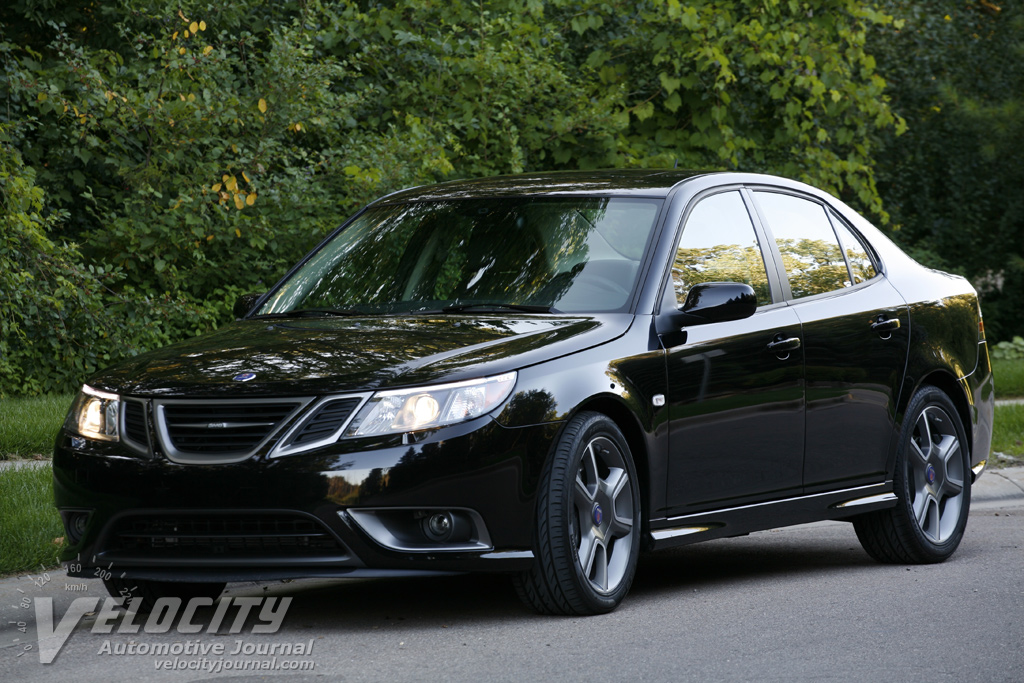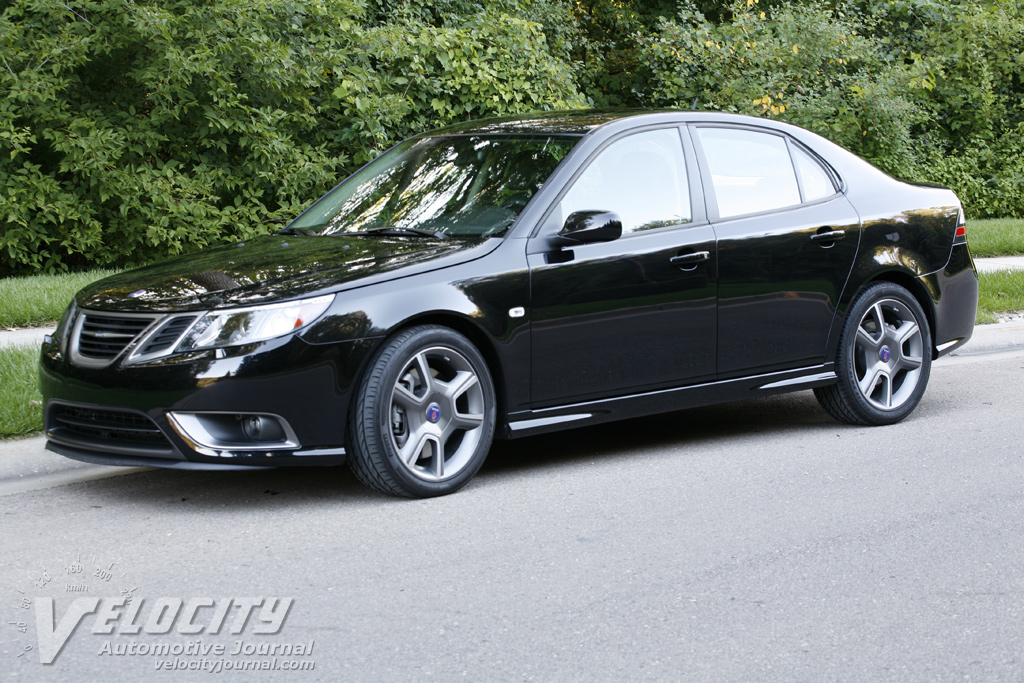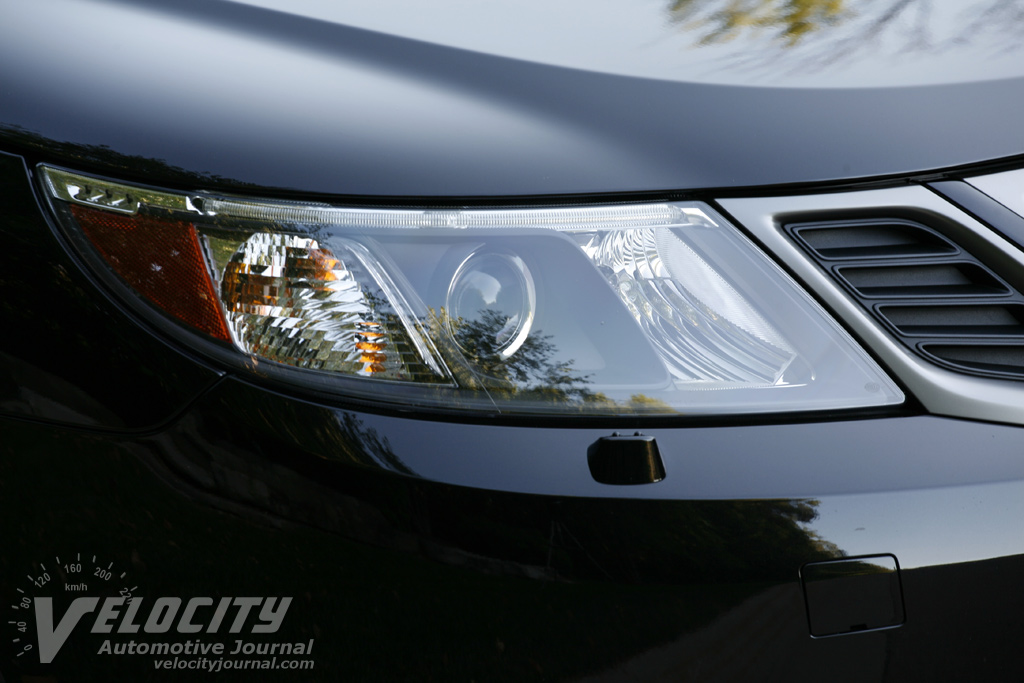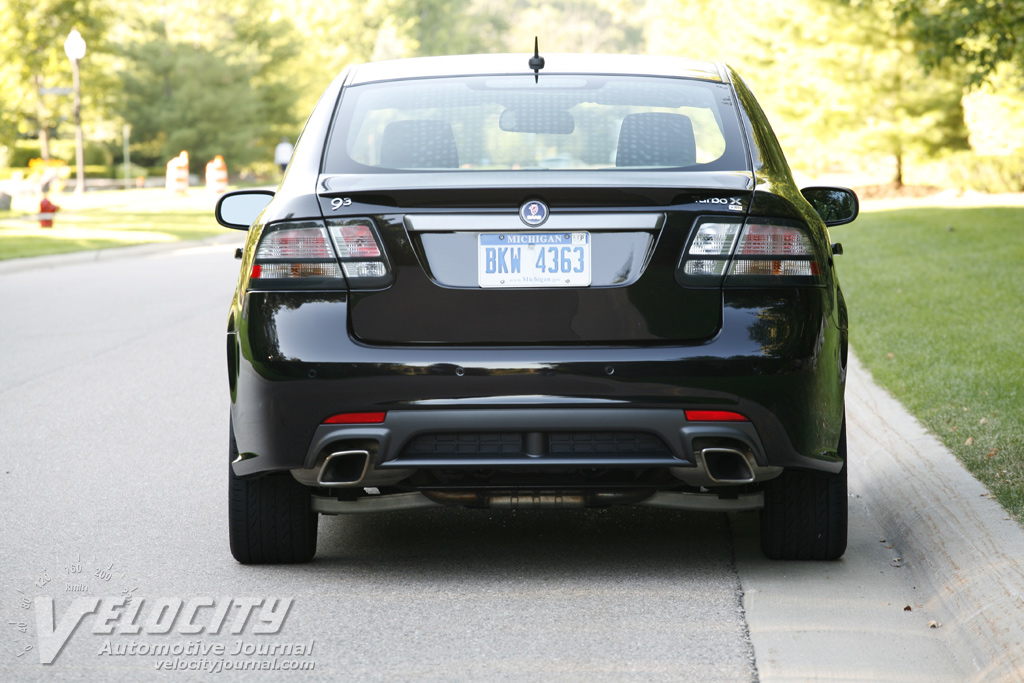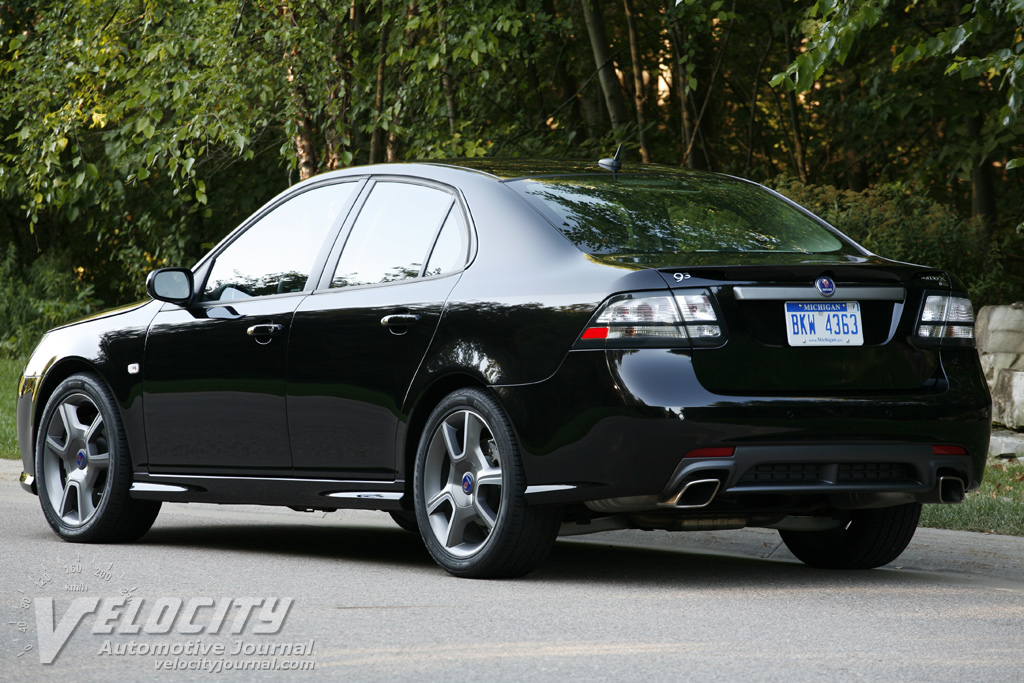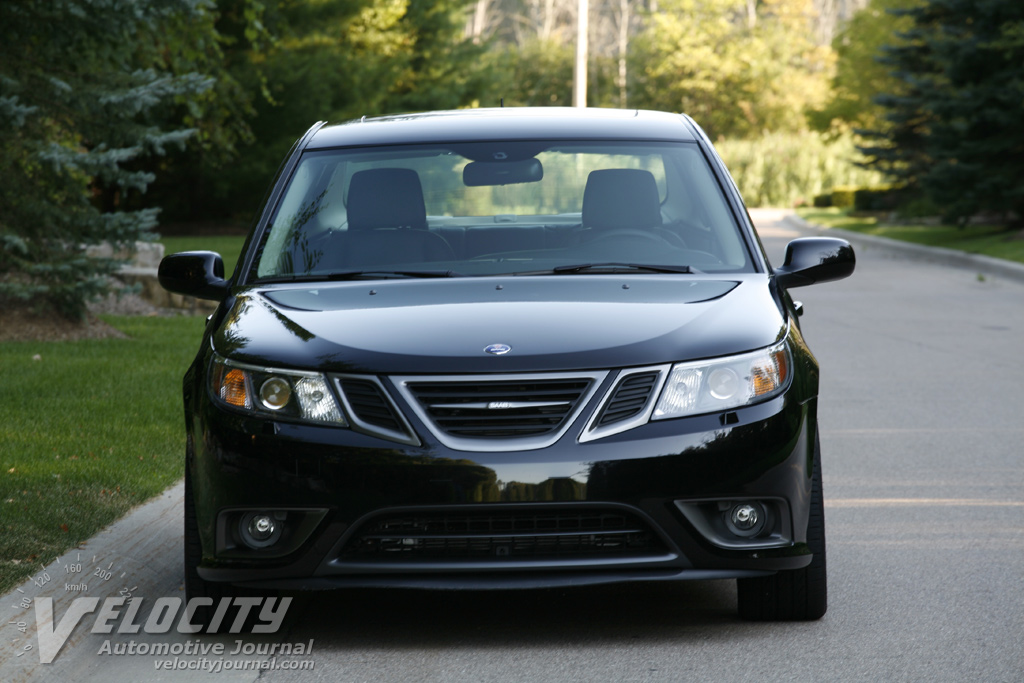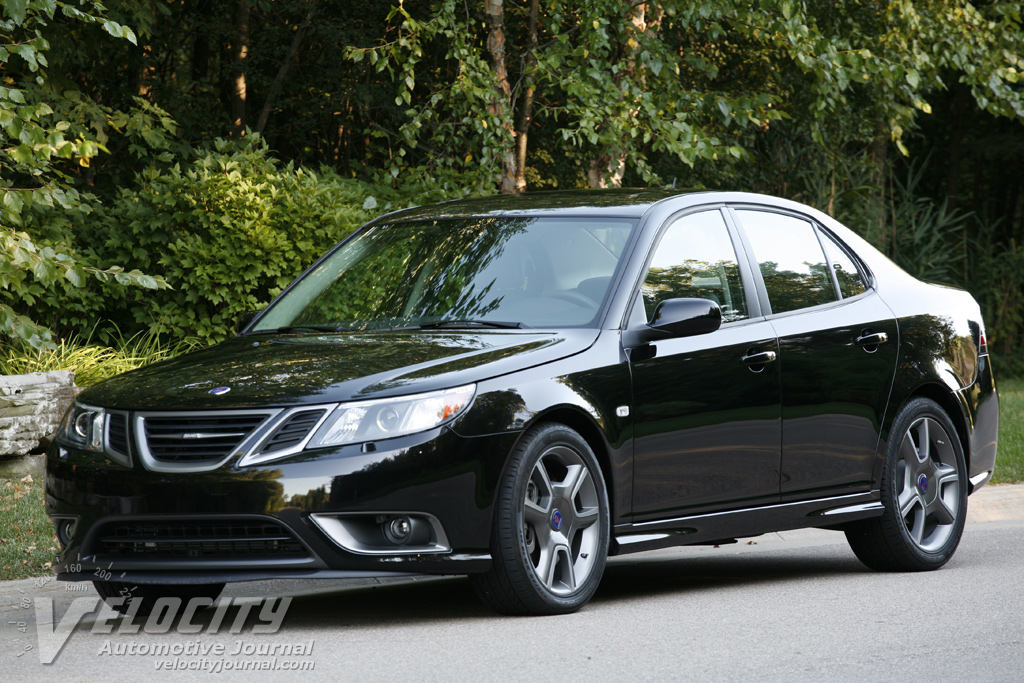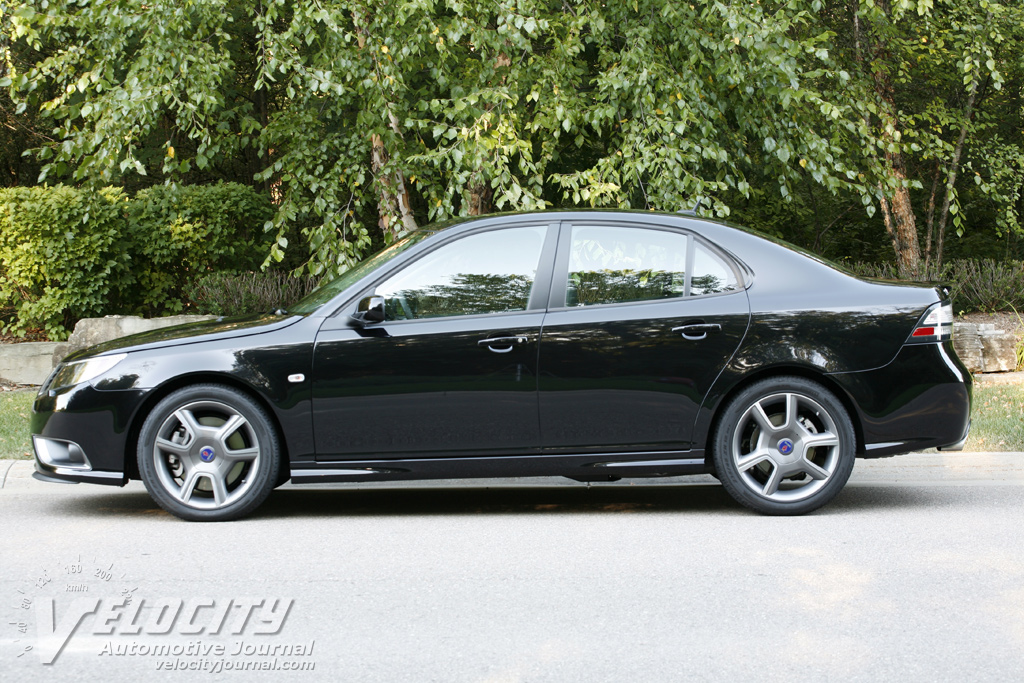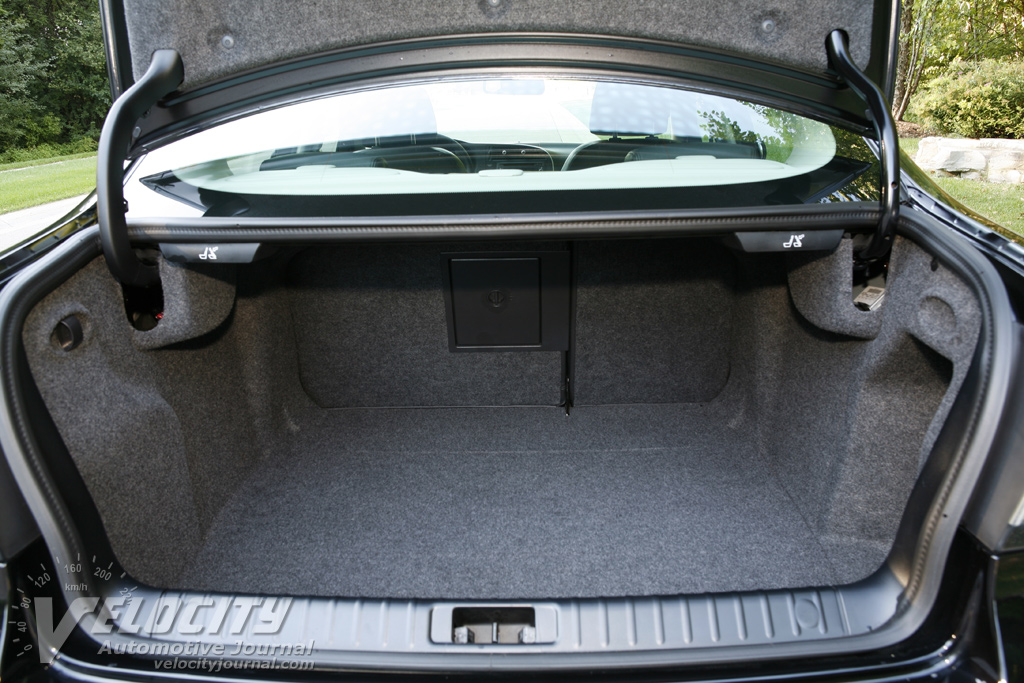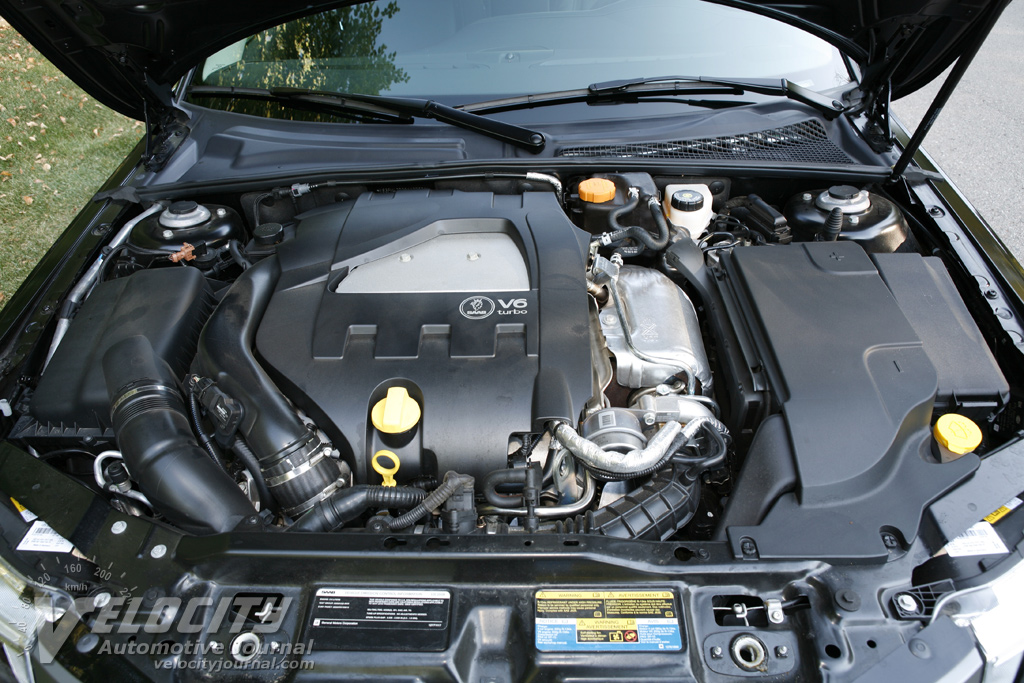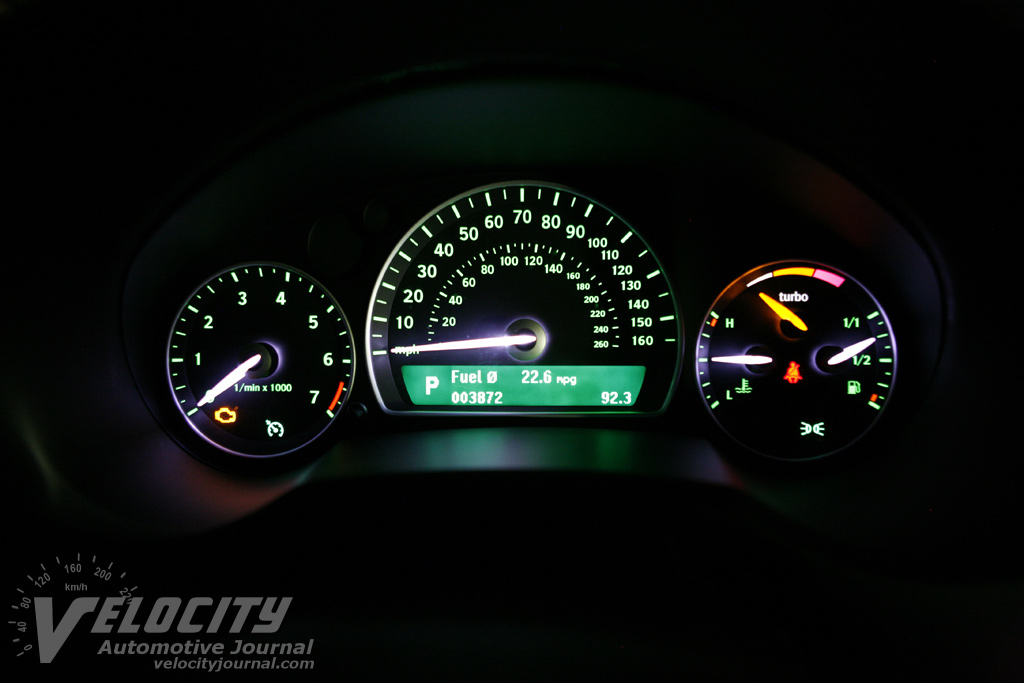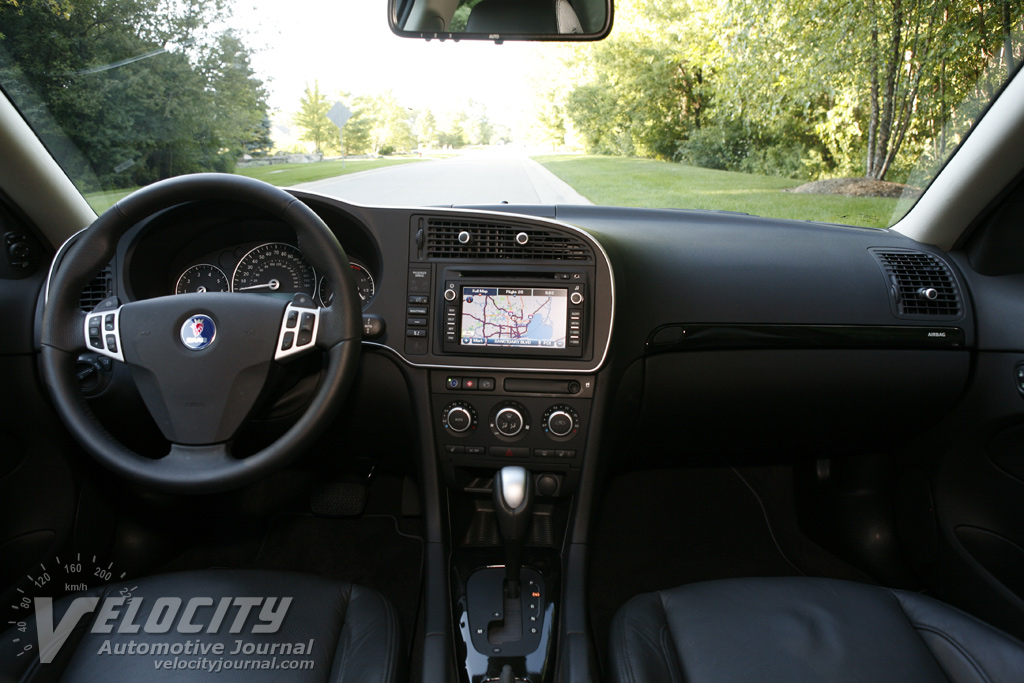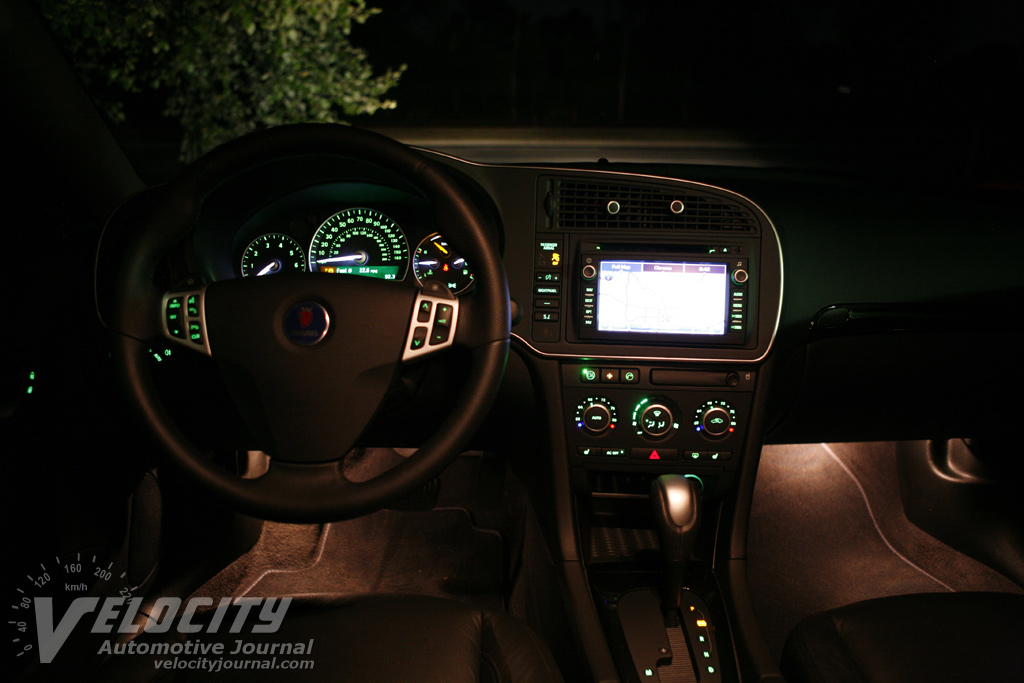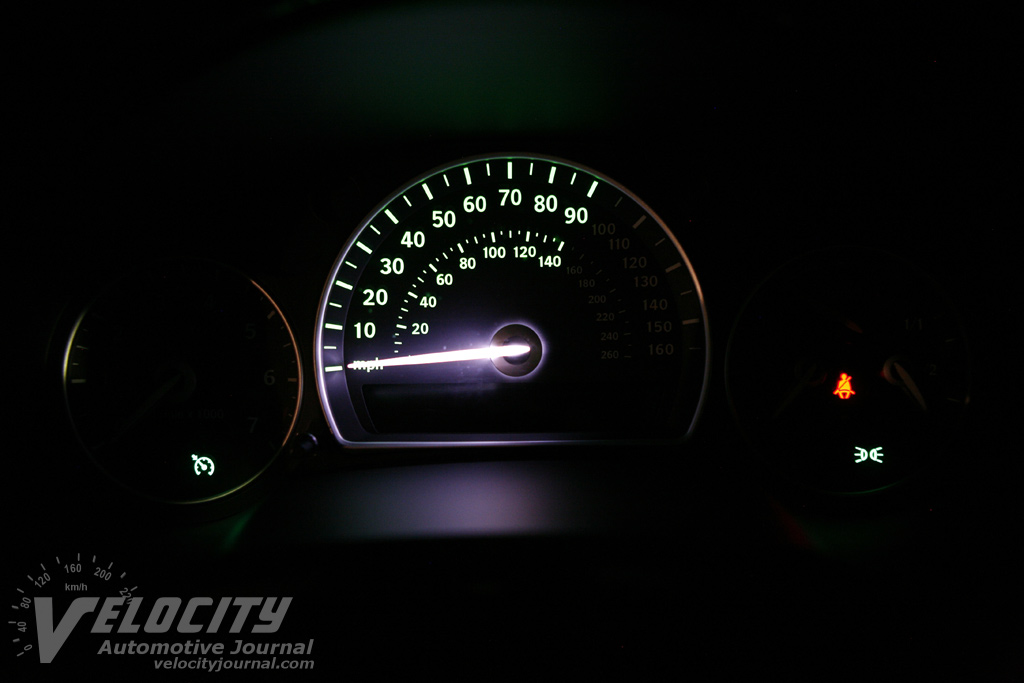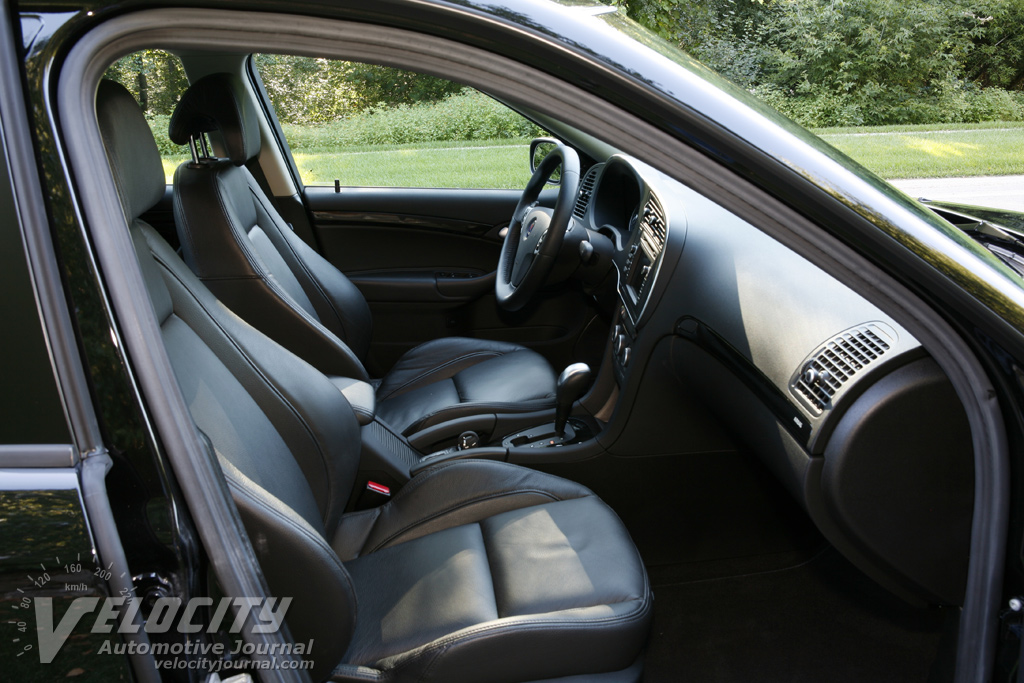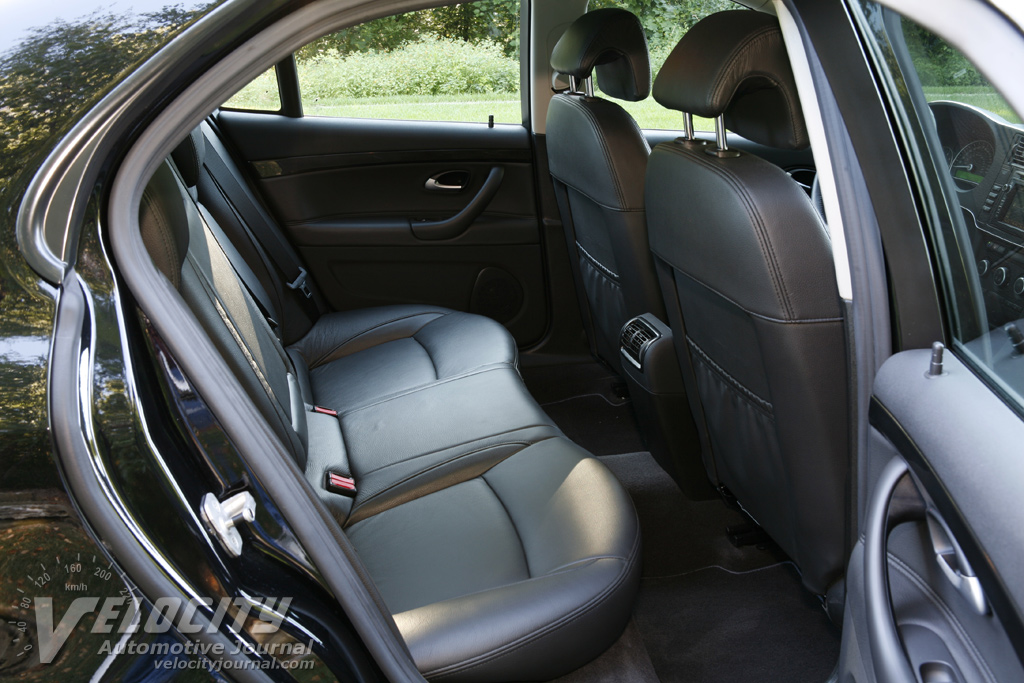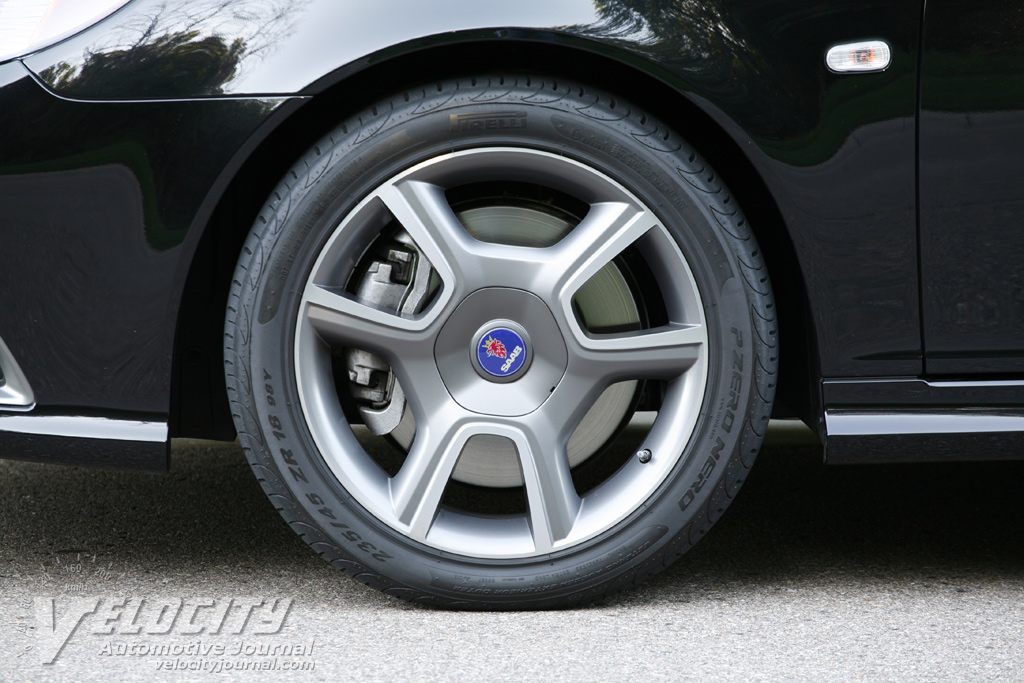2008 Saab 9-3 Turbo X
08/21/2008
Shahed Hussain
The 9-3 is Saab's midsize entrant in its rather abbreviated range of models. The popular 9-3 range now includes the all-wheel drive Turbo X, available as a 4-door or the SportCombi wagon. Saab has a long history of sporty limited-edition models; enthusiasts will recall the 99 Turbo, the 900 SPG, or the iconic 900 Turbos from the 1990s. More often than not, owners chose black as their preferred exterior color. In a nod to these Saab loyalists, Turbo X models are only available in Jet Black Metallic; exclusive 18-inch alloy wheels, bigger brakes, and a specially tuned exhaust system differentiate the limited edition sedan and wagon from the 9-3 Aero. For 2009, AWD is available as an option on all 9-3 models including the base 2.0T.
We tested a 2008 Turbo X sedan ($42,510) equipped with the optional Sentronic 6-speed automatic ($1,350), Cold Weather Package ($550), DVD Navigation ($2,145), and the Touring Package ($895). The options inflate the grand total for this well-equipped Turbo X to $47,450. We would delete the navigation system, and skip the automatic transmission, which would slice $3,495 from the sticker price.. Another alternative is the 9-3 Aero, which has the same powertrain and is also available with AWD, but costs a few thousand dollars less than the Turbo X.
Like the exterior, Saab offers the Turbo X in one interior color: black. Contrasting silver accents on the steering wheel, dashboard, and shift knob, combined with gloss black accents on the doors and center console break up the visual monotony of the charcoal interior. Build quality and materials are acceptable, but the Saab doesn't approach the class-leading interiors from Audi, Cadillac, or Lexus. The special leather upholstered front seats provide superb comfort and support, while snug thigh and shoulder bolsters hold the driver and front passenger securely in place; both front seats feature 8-way power controls. Rear passengers have spacious accommodations, but the back seats are best suited for two occupants, as the center position has an uncomfortably flat, stiff backrest.
In the Saab tradition, the ignition key is on the center console, behind the shift lever. A single cupholder is located on the center console between the front seats. Knobs for the dual-zone climate control are logically arranged on the center stack. A touch screen display combines navigation and audio controls for the Bose system. While some frequently used functions have dedicated buttons, too many navigation and audio settings require using the touch screen, which can be a distraction while driving. The fat-rimmed steering wheel, covered in perforated leather, has audio, Bluetooth phone, and cruise control buttons on the spokes. In the instrument binnacle is a semi-circular 160-MPH speedometer, flanked by a 7,000 RPM tachometer; smaller gauges for coolant temperature, fuel level, and turbo boost are clustered together on the right side of the speedometer. A driver information display at the bottom of the speedometer shows transmission mode, fuel consumption, and trip computer data. Saab has a unique "nightpanel" button on the dash that blacks out all non-essential gauges and displays at night: only the speedometer and a few other indicators are visible in "nightpanel" mode.
A new turbocharged 2.8L V-6 is standard on the Turbo X and shared with the 9-3 Aero. The forced-induction V-6 cranks out 280-bhp @ 5,000 RPM, but more impressively, 295 lb.-ft. of torque at just 1,900 RPM. The intercooled turbo adds up to 11.6 PSI of boost, on top of the relatively high 9.5:1 compression ratio. Below the torque peak, the V-6 feels slightly sluggish, as the turbo hasn't fully spooled up. The Saab's sport exhaust system drones under acceleration and at a steady cruise between 70-80 MPH. Fortunately, the drone disappears if you manually downshift to fifth gear, but fuel consumption will suffer as a result. The EPA rates the Turbo X at 15/24 MPG (city/highway) with the 6-speed automatic; we averaged 22 MPG in mixed city and highway driving. The standard 6-speed manual does slightly better at 16/24 MPG (city/highway).
In an effort to optimize fuel economy, Saab calibrated the optional Sentronic 6-speed automatic to upshift as rapidly as possible, and it downshifts reluctantly, often requiring full throttle for several seconds before it does so. Fortunately, the "S" button on the dashboard switches the transmission into Sport mode for faster shifts; fully manual control is available via the console shift lever or the steering wheel-mounted buttons, but since the transmission's Sport mode is so effective, we rarely felt compelled to shift manually. Dedicated enthusiasts may prefer the standard 6-speed manual, but the automatic is perfectly adequate for less demanding customers.
Despite low steering effort, the Turbo X tracks accurately on highways and two-lane roads, but the driver doesn't get much tactile feedback via the steering wheel. The rack-and-pinion system shares the same 16:1 steering ratio and 2.97 turns lock-to-lock with other 9-3 models. We couldn't really determine the effect of the Re-Axs passive rear-steering suspension geometry, but the Saab's mild understeer belied its nose-heavy 60/40 front/rear weight distribution.
Saab fits the Turbo X, Aero, and 2.0T Sport models with bigger brakes, with vented discs at all four corners: 11.81" diameter rotors (front), and 11.42" diameter rotors (rear). ABS, traction control, and ESP (electronic stability program) are standard. Brake performance is above average, hauling the Turbo X down from highway speeds with ease; however, in our test model brake feel was spongy with a lack of pedal feedback.
Saab's new all-wheel drive system essentially eliminates torque steer, and just as importantly, significantly reduces understeer by preemptively funneling torque to the rear wheels. The Haldex AWD system is dubbed XWD (Cross Wheel Drive) by Saab. For 2009, XWD is now offered on the 2.0T and Aero models with the standard 6-speed manual, or the optional 6-speed automatic. This on-demand AWD system engages the rear wheels as required to enhance handling or improve traction; the system will divert torque to the rear wheels even before the front wheels slip to improve acceleration. An electronically control limited-slip rear differential (eLSD), can vary torque to each rear wheel via multi-plate clutch. Saab uses the variable torque capability of the eLSD to reduce yaw for improved stability.
Although the Turbo X shares the identical suspension layout as the standard 9-3, it benefits from self-leveling rear dampers not available on its siblings. MacPherson struts, coil springs, and an anti-roll bar comprise the front suspension, which is isolated from the body with a sub-frame. At the rear is a 4-link independent setup with coil springs, dampers, and an anti-roll bar; passive rear-steering via Saab's Re-Axs system reduces understeer around corners. Saab gives the Turbo X 18-inch alloy wheels shod with 235/45R18 Pirelli PZero Nero tires. The combination of low profile Pirellis and the stiff dampers results in a brittle ride over bumpy roads. In contrast, the Saab's softly sprung suspension allows significant body roll, plus noticeable dive and squat when the suspension loads up. However, the PZero tires grip tenaciously on smooth roads, where the Turbo X tracks around curves with confidence.
Saab intended the Turbo X to compete with the Audi A4 and BMW 335xi, but other alternatives include the Infiniti G37x, Lexus IS250 AWD, Cadillac CTS4, and Acura TL Type-S. Among these rivals, the Saab faces some tough competition, especially because its as-tested price is comparable to the BMW or Cadillac, while the Acura, Infiniti, and Lexus offer superior value. While the addition of AWD is long overdue to the entire 9-3 lineup, this only puts the Turbo X on par with its rivals. Many Saab customers will probably prefer the less expensive 9-3 Aero, which is available with a nearly identical drivetrain. Ultimately, the Turbo X is a niche sports sedan for dedicated Saab enthusiasts who value its combination of rarity and performance.

